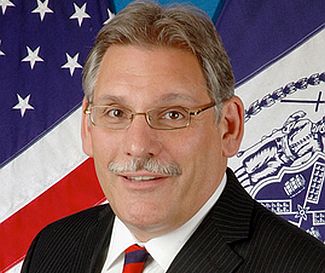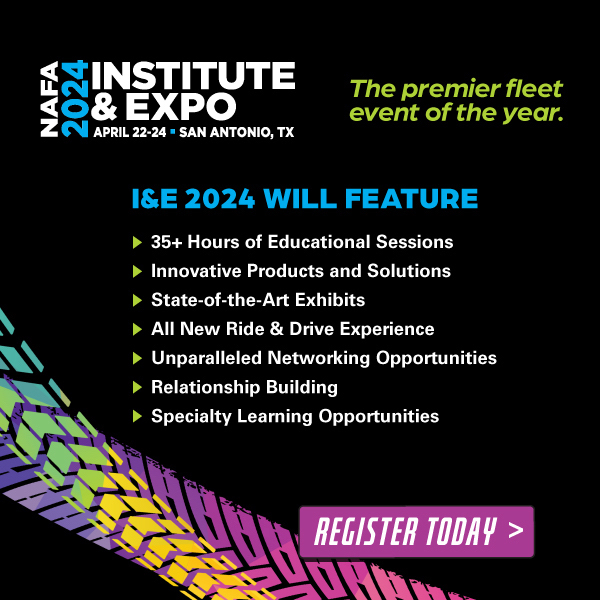
The NYPD’s Deputy Commissioner’s approach
Janice Sutton:This article was written by the late Mark Boada and appeared in Fleet Management Weekly in August, 2020, but it is as timely today as it was last year.
Mark Boada – 2020
In this time of looming cuts in government budgets, prompted by the COVID-19 recession, public sector fleet managers may be wondering how to keep their technicians, administrators and managers motivated without meaningful pay increases and opportunities for overtime.
Nine years ago, Robert Martinez, then a manager within the New York Police Department’s fleet, presented a paper on that subject to fellow students at the Harvard Kennedy School of Government’s program for senior executives in state and local government.”
Today, Martinez, who holds a bachelor’s degree in electrical and mechanical engineering from the City University of New York and a master’s degree in executive management from New York University, is the NYPD’s deputy commissioner for support services, which includes responsibility for the department’s entire 10,000-vehicle fleet and more. In these edited excerpts from his 2011 paper, Martinez presents the management principles he continues to stand by and to which he credits much of the success of his 900-member organization.
Robert Martinez
Many organizations that operate fleets are looking for ways to develop personnel performance and create a motivational climate in the workforce. To this end, I felt it would be helpful to outline an approach to employee motivation that has been implemented in large fleets throughout the United States, including those in a city government setting.
Civil servants are sometimes stereotyped as lazy and unmotivated. However, in my 23 years as a civil servant, I have met some of the most talented, proactive, and motivated employees any organization could have. On the other hand, there is a cycling of motivation that goes up and down depending on the environment, and which is greatly affected by management.
In my experience, managers often don’t know the effect they have on their subordinates and only create a positive workplace by chance. My goal is to help fleet managers to develop and implement a new program that creates a work environment where employees are highly productive, highly motivated and that is a “win-win” for all levels of the division and the police department as a whole.
Some recent research has shown that unmotivated staff aren’t simply lazy. Instead, they aren’t proactive because they are afraid to make decisions. The following are some remarks that typically reflect these symptoms:
• “The more you work, the more mistakes you make. So, don’t do anything unless you have to. And even then, do as little as possible.”
• “We just do our job, play it safe.”
• “We are not paid to make our own judgments.”
• “It is perfectly alright to seek and follow the boss’s instructions every time.”
• “Why bother making suggestions?”
• “Let’s check how the job was done last time and follow suit.”
Some of the common explanations government workers offer as to why they aren’t motivated are: office politics; repetitive, simple tasks all the time; unclear instructions; organizational vision, mission, and values not clearly communicated; vague and contradicting instructions; unproductive meetings; unfairness; lack of information; discouraging responses; tolerance of poor performance; over-control, and no recognition of achievements.
Empower employees to develop their own goals
In the new program I propose, we can all find something to help address some of these problems. The program focuses on a special form of empowerment called delegation. The following quote by the psychologist David McLelland expresses the idea clearly: “Evidence shows that empowered employees are more productive, more satisfied, and more innovative, and that they create higher-quality products and services than un-empowered workforce employees. On the other hand, empowerment means giving up control and letting others make decisions, set goals, accomplish results, and receive rewards. It means that other people will probably get credit for success.”
The program starts with establishing clear performance expectations. Each supervisor and their assigned personnel must be asked to establish their own set of goals and create a mission statement that is both measurable and achievable. Within 60 days of the start of the program, the manager in charge should personally visit each work location to provide feedback opportunities for employees to clarify expectations, adjust goal difficulty and gain recognition and trust.
According to motivational experts David Kegan and Jessica Lahey, when everyone helps to create a mission statement and measurable goals, “they build a mental machine. If you value this machine, you will want to maintain it and upgrade it…Tell me and I’ll forget; show me and I may remember; but directly involve me, and I’ll make it my own.”
Frequent performance feedback is essential
A key factor in motivating employees is to provide frequent feedback on how they are performing. Kegan and Lahey explain that “[w]e may know in our hearts that what we do matters, but it is certainly confirming to hear the words from others. Perhaps more important, hearing that our work is valued by others confirms for us that we matter as a person. One way we experience that what we are doing at work is valuable is by hearing regularly from others how they value what we do.”
In civil service, cash incentives are not readily available but, as psychologist Abraham Maslow wrote, “Human scientific needs begin with physiological, followed by safety, belongingness, esteem, and self-actualization.” Cash might help to motivate people, but there is more to life than just money. Real motivation is not for sale — buying allegiance is not an effective long-term motivational strategy.
Implementing the NYPD program
Before any of this started, I first had to get all my supervisors to buy into this new program. To support it, I enrolled them in leadership training in the areas of emotional intelligence and effective two-way communication. Part of the instruction was to make it clear to my supervisors that they’re not always right and that their assumptions aren’t always accurate or valid. Another was training them how to deliver objective feedback to employees.
Then, part one of the implementation plan was to give all departments 60 days to create their own mission statements and goals that take the needs of both the employees and the police department into account. The understanding was that those goals and mission statements should not be written in stone but should be updated and changed annually or as needed to keep all employees on the same course as the mission and goals of the entire division.
Specific areas that I wanted them to address were safety, quality, cleanliness, improvements, professionalism, and anything else that they felt was important to them and the department. I also want them to include free time activities for the worker to interact and maybe have a barbecue and share family or personal stories.
Part two of the implementation plan was to redevelop the existing employee evaluation program. Evaluations were traditionally based upon a set of somewhat basic tasks and standards in which neither the supervisor nor employee had any input as to what was to be rated. The whole evaluation program was seen as a routinized chore to do every September with no real benefit for anybody. Meaningful evaluations were only conducted when someone was being considered for promotion.
Some supervisors gave all the employees the same rating, which only served to help the lowest performers. Proactive workers, after a few years of seeing this, started to slow down and feel “Why should I work harder when nobody cares or recognizes good work.”
Under the new plan, supervisors were instructed to give candid, personalized feedback on each employee’s performance and progress toward meeting their goals. Feedback was to be given frequently throughout the year, and it was to include mentoring and coaching. In the process, all levels of management down to line workers were reminded that the police department would not be able to protect the citizens of the city properly without the services they provide.
Results that justified the effort
One year after launching the new program, I saw results that were well worth the effort. In one initiative, I formed a mechanical personnel focus group that identified mechanical problems and ways to improve the division. Over the following 12 months, they identified over thirty problems with vehicles as well as areas in which conditions needed to be improved. In some cases, within days of the group’s meeting action was taken and the condition was corrected.
Another part of this new culture was making me approachable, and now everybody feels welcome to make an appointment to meet with me. In addition, I have implemented monthly follow-up training for all levels of supervision. And, at least once a week I read my mission statement just to keep myself on course.
The goal: employee commitment to productivity
The goal of win-win work environment is to make all parties feel good about their role in creating the mission statement and their goals and to feel committed to the action plan. In a win/win culture, people evaluate themselves, using the criteria that they themselves helped to create up front. The reward system must also be in-line with established goals and values.
The character of a motivated staff is reflected through their behavior. Some of the traits that a motivated staff exhibit include being energetic and full of initiative; committed to serving the work place; wanting to think for themselves; appreciating recognition and challenges; seeking opportunities to improve their capabilities; taking proactive and positive actions to solve problems; and believing that they can contribute and make a difference. I’m pleased to say that that’s what I and my managers see every day.




